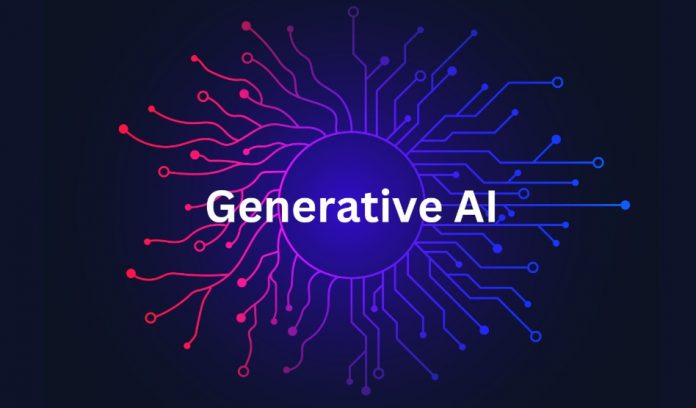
Generative AI is revolutionizing the world of technology, enabling the creation of new content, from text to images, using powerful machine learning models. As businesses increasingly look to adopt these advanced technologies, the demand for skilled Generative AI Engineers has skyrocketed. But what does it take to become a top-tier Generative AI Engineer?
Let’s dive into the essential skillsets and knowledge areas you must develop to thrive in this exciting field.
1. Strong Foundation in Machine Learning & Deep Learning
To begin your journey as a Generative AI Engineer, a solid understanding of machine learning (ML) and deep learning (DL) is essential. These fields form the backbone of Generative AI models, mainly when working with large language models (LLMs) and image generation models.
- Mathematics and Algorithms: Proficiency in linear algebra, calculus, and probability theory is crucial for understanding and improving machine learning algorithms.
- Neural Networks: You must be comfortable building, training, and evaluating neural networks, particularly the advanced architectures that power Generative AI, like Transformers, GANs (Generative Adversarial Networks), and VAEs (Variational Autoencoders).
2. Proficiency in Programming and Tools
A Generative AI Engineer must be proficient in several programming languages and tools that enable designing and deploying AI models.
- Programming Languages: Python is the primary language for AI development, and knowledge of libraries such as TensorFlow, PyTorch, and Keras is essential for building deep learning models.
- Data Processing: It is crucial to understand how to work with large datasets. Libraries like NumPy, Pandas, and OpenCV are frequently used in Generative AI applications, mainly when dealing with text and image data.
- Frameworks: You should be familiar with frameworks like LangChain, LlamaIndex, and Chainlit, which are integral for building and deploying AI applications.
3. Working with Large Language Models (LLMs)
LLMs, like OpenAI’s GPT and Meta’s LLaMA, are a core part of Generative AI, particularly for natural language processing (NLP) tasks. Proficiency in working with these models is a key skill for any Generative AI Engineer.
- Training and Fine-Tuning: A significant part of working with LLMs involves fine-tuning them with specific datasets to make them more practical for a business use case. This requires expertise in customizing models using transfer and supervised learning techniques.
- API Integration: Many LLMs are accessible via APIs like OpenAI’s API or cloud-based services like AWS Bedrock. Familiarity with these APIs will help you integrate LLM capabilities into production environments.
4. Understanding of Image Models and Multimodal AI
Generative AI isn’t just about text generation—it extends to creating images, videos, and music. A comprehensive skillset involves knowledge of large image models and multimodal models that combine text and images.
- Image Generation Models: It is important to be familiar with tools like Stable Diffusion and DALL-E to solve image generation use cases.
- Multimodal AI: Multimodal models integrate both text and image data, and as businesses increasingly require solutions involving both modalities, an understanding of models like Google Gemini Pro is key.
5. Expertise in Open-Source and Paid LLM Models
Generative AI engineers must be versatile when working with open-source and paid LLMs.
- Open-Source Models: Popular open-source models, like Meta’s LLaMA 2 and Mistral, offer great flexibility for training and customization. Engineers must understand how to leverage and fine-tune these models based on the project’s requirements.
- Paid Models: Companies like OpenAI, Microsoft, and AI21 Labs offer paid models with pre-built APIs. Understanding their usage, limitations, and deployment strategies is essential for building scalable applications.
6. Cloud Computing Knowledge
Generative AI often requires significant computational power, making deployment of cloud platforms like AWS, Google Cloud, and Azure indispensable. As a Generative AI Engineer, you should be familiar with leveraging these platforms for large-scale model training and deployment.
- AWS Bedrock: AWS Bedrock is a game-changer in generative AI as it provides APIs for working with multiple LLMs and image models, both open-source and paid. Understanding how to utilize cloud services for training and deploying models is crucial.
- Scalability: You should also know cloud scalability, optimizing models for cloud environments, and managing infrastructure for high-performance computing.
7. Vector Databases and Data Storage
In Generative AI, you’ll often work with embeddings and large datasets needing efficient retrieval. Familiarity with vector databases like ChromaDB, Pinecone, and Cassandra will help you handle and store data effectively.
- Vector Search: Understanding how to perform vector search and integrating it with models like LLMs will allow you to optimize the retrieval and processing of relevant information.
- Data Transformation: It is critical to be able to transform raw data into embeddings and efficiently use them in AI applications.
8. Deployment and productionization
Once a model is trained, the real challenge begins—deploying it into production. Deployment knowledge is vital for scaling AI models effectively.
- Deployment Techniques: Learn about containerization using Docker and Kubernetes orchestration to deploy AI models at scale.
- Model Monitoring and Maintenance: After deployment, continuous monitoring and model updates are necessary to ensure optimal performance. This involves tools for performance tracking and model versioning.
9. Problem-solving and Business Acumen
Finally, while technical skills are paramount, a Generative AI Engineer must also possess strong problem-solving abilities. You’ll be expected to analyze business requirements, identify relevant use cases for generative models, and choose the right approach for deployment.
- Use Case Identification: You should be able to assess the business problem and choose the most appropriate generative model—whether text-based, image-based, or multimodal.
- Ethical Considerations: It is crucial to understand the ethical implications of generative models, particularly with respect to content creation, privacy, and fairness.
Conclusion
Becoming a professional Generative AI Engineer requires strong foundational knowledge, hands-on experience with various models, and proficiency in deployment technologies. You can be at the forefront of this exciting and rapidly evolving field by mastering the essential skillsets, including working with LLMs, cloud platforms, and vector databases.
Continuous practice, project building, and keeping up with the latest advancements will set you on a path to success in the world of Generative AI.

















